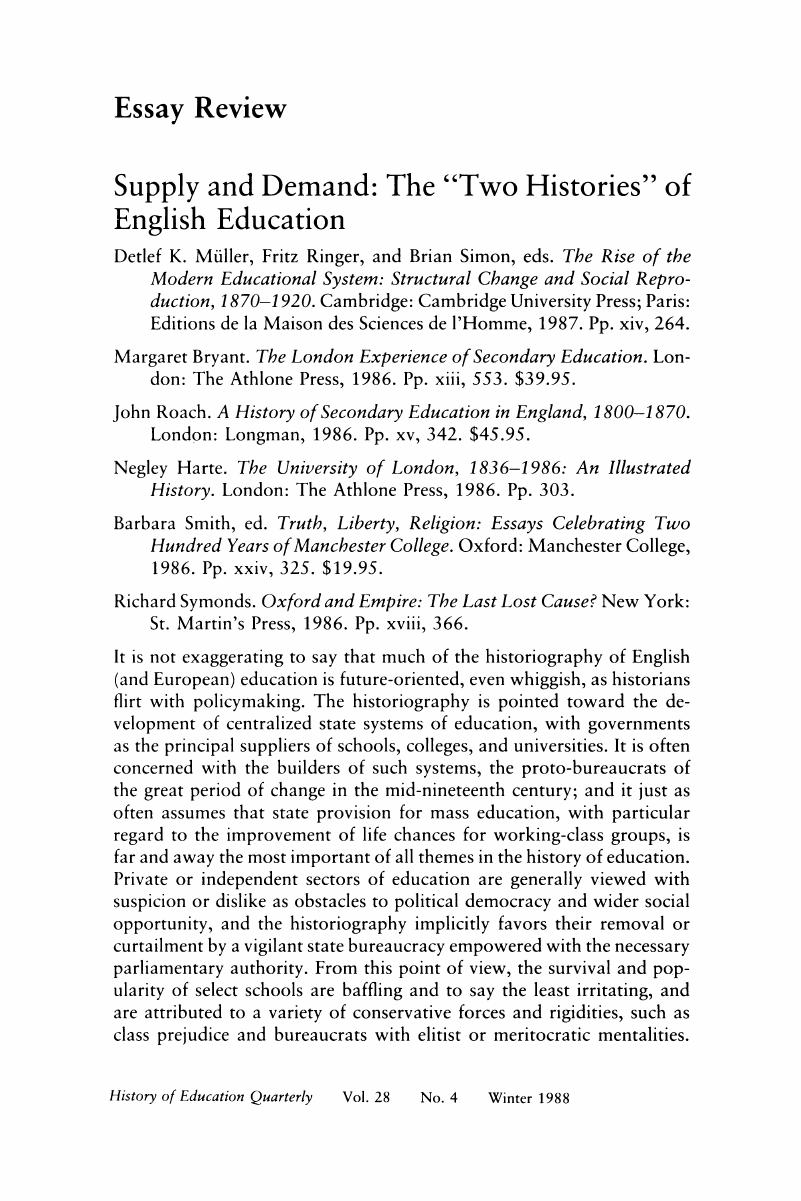Article contents
Supply and Demand: The “Two Histories” of English Education
Published online by Cambridge University Press: 24 February 2017
Abstract

- Type
- Essay Review
- Information
- Copyright
- Copyright © 1988 by the History of Education Society
References
1 For a sophisticated discussion of market operations, see Tom R. Burns and Helena Flam, The Shaping of Social Organization: Social Rule System Theory with Applications (London, 1987), ch. 2.Google Scholar
2 Ringer, Fritz K., Education and Society in Modern Europe (Bloomington and London, 1979).Google Scholar
3 Bryant, Margaret, The Unexpected Revolution, A Study in the History of the Education of Women and Girls in the Nineteenth Century (London, 1979).Google Scholar
4 Hans, Nicholas, New Trends in Education in the Eighteenth Century (London, 1951).Google Scholar
5 Sheldon Rothblatt, See, “Historical and Comparative Remarks on the Federal Principle in Higher Education,” in History of Education 16 (Sept. 1987): 151–80.Google Scholar
6 “Amiable tolerance” can also mean voluntary social classes, religious, ethnic, and racial separatism, e.g., the coexistence in English public schools and Oxbridge colleges of rowing hearties and hard-working, serious “quizzes,” without much in the way of communication occurring. For a report on contemporary America, see the New York Times, 26 May 1988.Google Scholar
- 6
- Cited by




